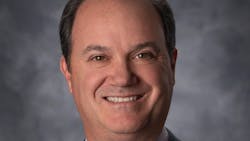Xcel CEO: ‘We Need Another Generation of Generation’ to Accelerate Transition
The energy industry’s transition to a carbon-free footing is accelerating but one prominent CEO says there’s more to be done than what’s in the pipeline – and he’s thankful for a helping hand from Washington, D.C.
Xcel Energy Inc. President and CEO Bob Frenzel on Oct. 28 said the company will have closed its coal plants in the Upper Midwest by the end of the decade and will be working on similar goals elsewhere in its service areas. The company typically files resource plans every three years and Frenzel said the expected inclusion of 10-year production tax credits in the reconciliation bill being negotiated in D.C., helps give Xcel and its peers a solid time frame on which to base investment decisions for the middle of this decade.
But, Frenzel added, pushing on from the projects already underway or being planned and completing the transition away from fossil fuels will require technologies not yet in the market.
“At the core, though, we need to identify that next generation of generation,” Frenzel said. “What we need is another type of emissions-free generation, and I think the infrastructure bill triples DOE funding for research and development. I think that’s critical for the industry to progress past where we expect to be, which is an 80, 85% carbon reduction by the end of the decade.”
Frenzel – who took over as CEO from Ben Fowke in August – made his comments during an Oct. 28 conference call discussing Xcel’s third-quarter results with analysts and investors. The Minneapolis-based company’s report showed a net profit of $609 million, up slightly from the same period of 2020, on revenues of nearly $3.5 billion. Frenzel and CFO Brian Van Abel also said they expect earnings per share to grow about 6% in 2022 and released a preliminary five-year capital spending plan totaling $26 billion, with more than $15 billion being targeted for transmission and distribution projects. Xcel’s executives expect they’ll need to raise about $7.1 billion in new debt to help fund those plans.
On the call, Frenzel also said demand from residential customers in the third quarter surpassed the forecasts the Xcel team had put together late last year. Customers across the company’s eight-state footprint have contributed to year-to-date load growth of 1.8%, Frenzel said, with Colorado playing a particularly strong role. Looking ahead, he added, he expects some of the extra demand generated by workers staying home during COVID-19 pandemic to recede but also thinks work-from-home initiatives will stick around for a long time to provide a floor to demand that’s higher than pre-pandemic.
On the commercial and industrial side of the business, a standout region for Xcel in the quarter were oil and gas drillers in the Permian Basin. At a number of Xcel substations, Frenzel said, load was 25% above pre-pandemic levels, thanks both to rising activity but also because a number of operators are investing much more in electrifying their rigs, pumps and compressors.
Xcel shares (Ticker: XCEL) were changing hand around $64 on the afternoon of Oct. 28. They have fallen about 10% over the past six months.
About the Author
Geert De Lombaerde
Senior Editor
A native of Belgium, Geert De Lombaerde has more than two decades of business journalism experience and writes about markets and economic trends for Endeavor Business Media publications T&D World, Healthcare Innovation, IndustryWeek, FleetOwner and Oil & Gas Journal. With a degree in journalism from the University of Missouri, he began his reporting career at the Business Courier in Cincinnati and later was managing editor and editor of the Nashville Business Journal. Most recently, he oversaw the online and print products of the Nashville Post and reported primarily on Middle Tennessee’s finance sector as well as many of its publicly traded companies.
